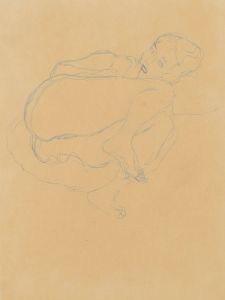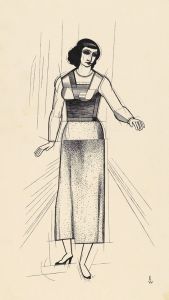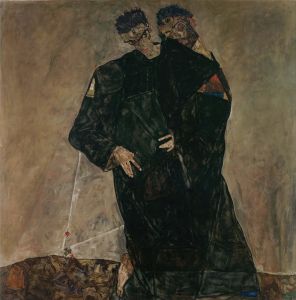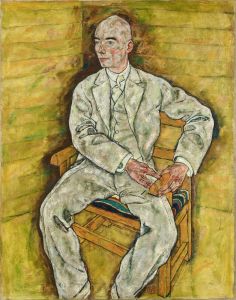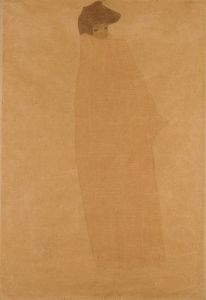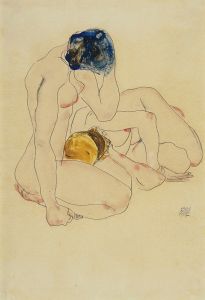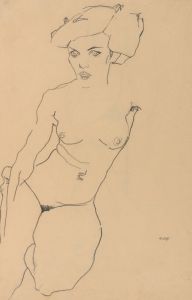
The Lyricist
A hand-painted replica of Egon Schiele’s masterpiece The Lyricist, meticulously crafted by professional artists to capture the true essence of the original. Each piece is created with museum-quality canvas and rare mineral pigments, carefully painted by experienced artists with delicate brushstrokes and rich, layered colors to perfectly recreate the texture of the original artwork. Unlike machine-printed reproductions, this hand-painted version brings the painting to life, infused with the artist’s emotions and skill in every stroke. Whether for personal collection or home decoration, it instantly elevates the artistic atmosphere of any space.
"The Lyricist" is a painting created by the Austrian artist Egon Schiele in 1911. Schiele, born in 1890, was a protégé of Gustav Klimt and a major figurative painter of the early 20th century. He is known for his intense and often controversial works that explore themes of sexuality, death, and self-identity.
"The Lyricist" is a notable example of Schiele's distinctive style, characterized by its raw emotional intensity and bold, expressive lines. The painting depicts a male figure, presumably a poet or musician, given the title. The figure is rendered with Schiele's signature angularity and exaggerated proportions, which convey a sense of psychological depth and vulnerability.
Schiele's use of color in "The Lyricist" is also significant. The palette is relatively muted, with earthy tones dominating the composition. This choice of color enhances the somber and introspective mood of the painting. The background is sparse, drawing the viewer's attention to the central figure and emphasizing the emotional weight of the subject.
Egon Schiele's work, including "The Lyricist," was heavily influenced by the Expressionist movement, which sought to convey emotional experience rather than physical reality. Schiele's approach to portraiture was particularly innovative; he often depicted his subjects in unconventional poses and with a stark, almost confrontational directness. This was a departure from the more idealized and decorative style of his mentor, Klimt.
"The Lyricist" reflects Schiele's preoccupation with the human condition and his ability to capture the inner life of his subjects. The painting's intense gaze and contorted posture suggest a sense of inner turmoil and existential angst, themes that are recurrent in Schiele's oeuvre.
Schiele's career was tragically short-lived; he died in 1918 at the age of 28 from the Spanish flu pandemic. Despite his brief career, he produced a substantial body of work that has had a lasting impact on the art world. His paintings, including "The Lyricist," are celebrated for their emotional depth, technical skill, and innovative approach to portraiture.
Today, Egon Schiele is regarded as one of the most important artists of the early 20th century. His works are held in major museums and collections around the world, and "The Lyricist" continues to be studied and admired for its powerful expression of the human psyche.






